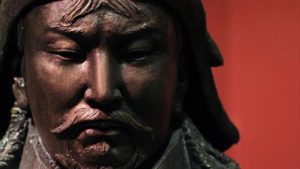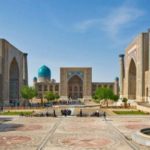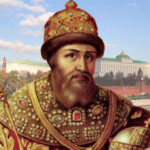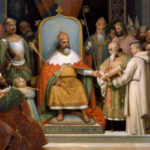Interesting facts about Genghis Khan
 About the great Mongolian conqueror, who terrified the endless steppes, not so much is known. Genghis Khan, also called Temuchin or Temujin, went down in history as the most successful Mongolian commander of all time. He created a real empire that swept most of Asia and part of Europe, and his troops were a nightmare for residents of many other lands. One can relate to Genghis Khan differently, but one cannot but admit that he was a very prominent person.
About the great Mongolian conqueror, who terrified the endless steppes, not so much is known. Genghis Khan, also called Temuchin or Temujin, went down in history as the most successful Mongolian commander of all time. He created a real empire that swept most of Asia and part of Europe, and his troops were a nightmare for residents of many other lands. One can relate to Genghis Khan differently, but one cannot but admit that he was a very prominent person.
The exact date of birth of Genghis Khan is unknown. It is assumed that he was born between 1155 and 1162 years.
He went down in history as the creator of the largest continental empire in history. Neither the Romans nor Alexander of Macedon could reach such proportions.
The dynasty of the descendants of Genghis Khan in his honor was named Chingizids.
Mongolian legends say that the newborn Genghis Khan was squeezing a blood clot in his palm, which was regarded as a symbol of the future conqueror of the world awaiting him.
In modern Mongolia, the cult of Genghis Khan flourishes. Everywhere there are huge monuments to this commander, and the streets are named after him.
Nine-year-old Genghis Khan was married to a ten-year-old girl.
After the death of his father, the future commander together with his family was forced to flee, since the rivals of his late parent wanted to destroy them all. His mother and children had to wander for a long time in complete poverty, and then live in a cave.
At the age of ten, Genghis Khan killed one of his brothers as a result of a dispute over prey brought from the hunt.
His appearance is not known for sure, but the remaining evidence suggests that he had green eyes and red hair.
In the modern world there are many direct descendants of Genghis Khan. There were thousands of women in his harem, so he left many children behind.
Little by little, Genghis Khan began to conquer the whole steppe, uniting other tribes around him and ruthlessly destroying rivals. At the same time, unlike most other Mongolian leaders, he always tried not to kill the soldiers of the enemy, but to save his life in order to subsequently take them into his service.
The name “Chingiz” is translated as “the sovereign of the boundless as the sea”.
The motive of Genghis Khan was often revenge. His campaign against Persia began after the Persians killed his ambassador. As a result, the army of the Mongol conqueror boldly Persian kingdom from the face of the earth and put this people on the brink of destruction.
The population of Iran, where Persia was previously located, again reached a size that was before the invasion of the Mongols, only at the beginning of the 20th century.
Having completely conquered the steppes, the commander assumed the title of kagan. Khan – the leader of the tribe, albeit large, and kagan – the king of all khans.
Under Genghis Khan, for the first time, the scattered tribes of nomads united into a huge single state.
His portrait began to be printed on Mongolian banknotes in the 90s of the last century.
Modern studies show that the conquests of Genghis Khan caused the death of approximately forty million people.
The location of the grave of the commander is unknown. Many archaeologists have been unsuccessfully looking for it so far.
The cause of Genghis Khan’s death is unclear. According to different versions, he died as a result of a disease or a fall from a horse. There is also an opinion that at night his wife slaughtered him, who then drowned, fearing retribution.



























